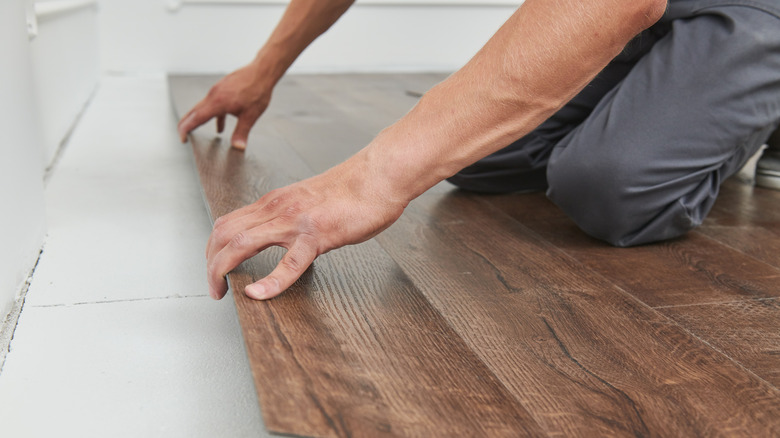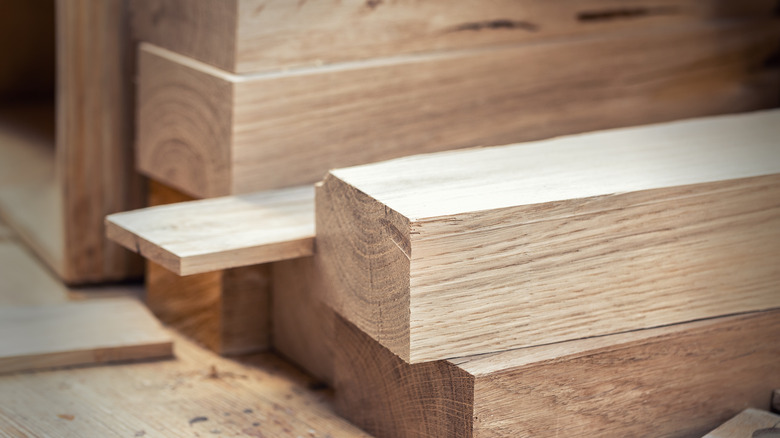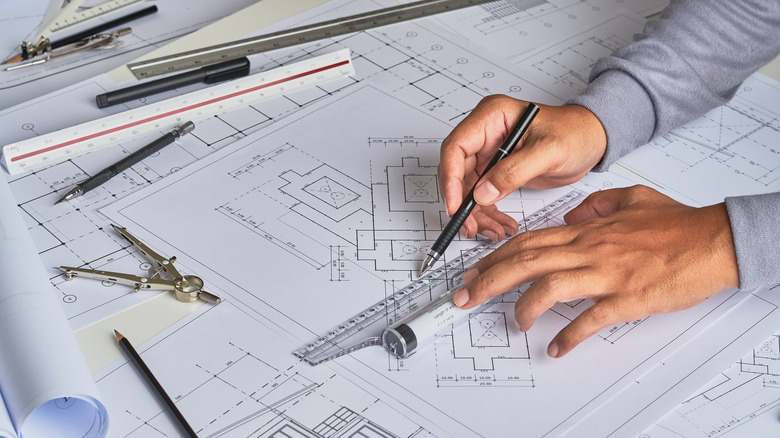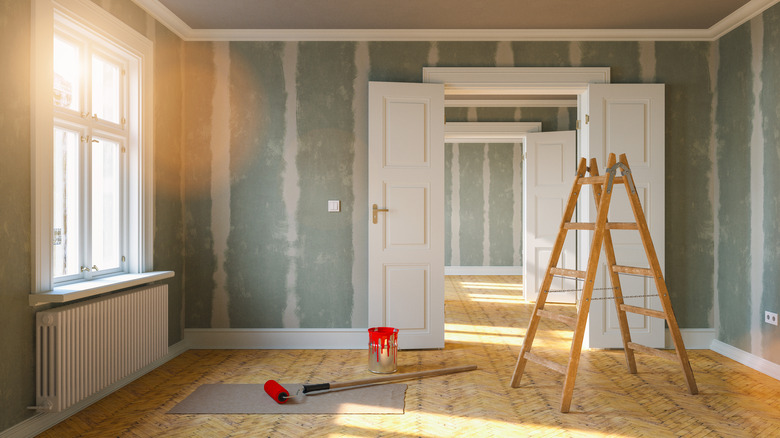The Real Reason Your Home Renovation Could Cost So Much More This Summer
The COVID-19 pandemic left the world in a state of disarray, leaving everyone in the country to pick up the pieces one vaccination at a time. But of all the ways the world has changed in light of the pandemic — including social distancing, working from home, and a penchant for sweatpants — there's been one surprising side effect that we could have never predicted: the price of home renovations.
Whether you're in the business of construction, working on some DIY projects at home, or simply a person who occasionally frequents the hardware store, you have probably seen that the price of materials necessary for home renovations have absolutely skyrocketed since the start of the pandemic, per Forbes. It's not uncommon for natural products to fluctuate in price, particularly different kinds of wood. But the COVID-19 pandemic has led to historically high prices — and for reasons other than standard inflation or seasonal demand. But how does coronavirus have anything to do with the supply and demand of materials, and where exactly are we seeing the price increases? Let's take a closer look.
How much can you expect to pay for material?
According to Business Insider, as of April 2021, prices for wood were at an all-time high at nearly $1,200 per thousand board feet. These dramatic increases began in 2020 and have only continued throughout 2021, with lumber prices rising over 250% during the previous year. Furthermore, the National Association of Homebuilders report that the cost of the typical one-family dwelling can be over $24,000 due to the increased cost of lumber, according to USA Today.
Prices are skyrocketing for various reasons. First of all, everyone was more than a little bored of staying at home during the pandemic. Many of us took this time to work on all the projects around the house that we never had time to do before, or perhaps projects we hadn't even noticed needed to be done until staying indoors most of the time. NPR explained that this surge in supply and demand aimed at lumber could be because while home, homeowners had time to enjoy crafts such as woodworking or decided it was time to get some projects done that were on their bucket list.
Mills suffered significantly due to the COVID-19 pandemic
The pandemic had a rough effect on businesses everywhere. BBC reported that the spread of coronavirus has a huge hand in businesses keeping track of the costs of COVID-19. Businesses saw an increase in unemployment, income cuts, and ultimately less transactions due to a dramatic financial recession. The wood industry was no exception to this trend. Sawmills struggled to keep up with the increased demand, which was made worse by workers being forced to stay home during the worst of the pandemic. "Covid hits and they get really, really scared," said Paul Jannke, principal at Forest Economic Advisors. "You saw construction curtailments across the board" (via CNBC).
In addition, lumber dealers decreased the amount of inventory they had on hand due to a false prediction that demand would be low. But according to Jannke, the supply is currently really low and not close to the demands, which are really very high. And voilà — record-high lumber prices are born, making home renovations more expensive than ever.
Projects will take longer to complete, increasing overall prices
According to the Associated General Contractors of America, the construction industry has been dealing with an unparalleled combination of increasing prices for materials and staffing struggles. Studies have shown that the average price of diesel fuel, steel, lumber, spray polyurethane products, wallboard and glass mat products, copper and brass, engineered wood products, and many other products have skyrocketed in light of the pandemic, making the overall cost of renovation projects much higher than normal.
In addition, it won't only be prices that are increasing, but waiting times as well. According to Houzz, the demand for construction is on the rise, with the wait time to kick off a project averaging out at 9.3 weeks. (To put things into perspective, the same time last year was an average 5.4-week wait time.) The wait time for an interior design or architectural service is climbing as well. "Businesses are faced with soaring homeowner demand along with lengthy permitting timelines, supply chain constraints, and unrelenting labor shortages," Houzz senior economist Marine Sargsyan said. "These constraints likely contribute to industrywide wait times of more than two months before a business can begin a new project."



